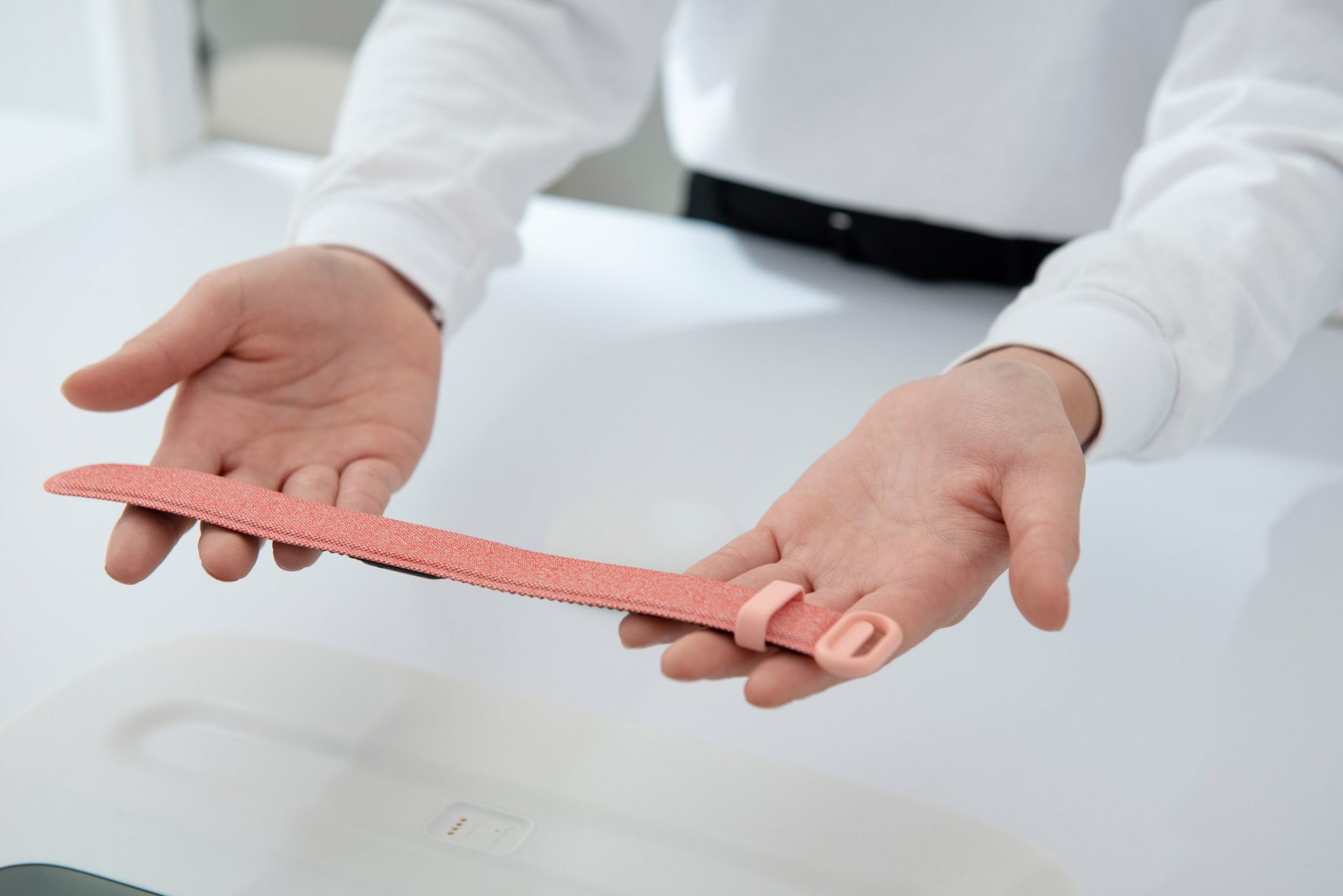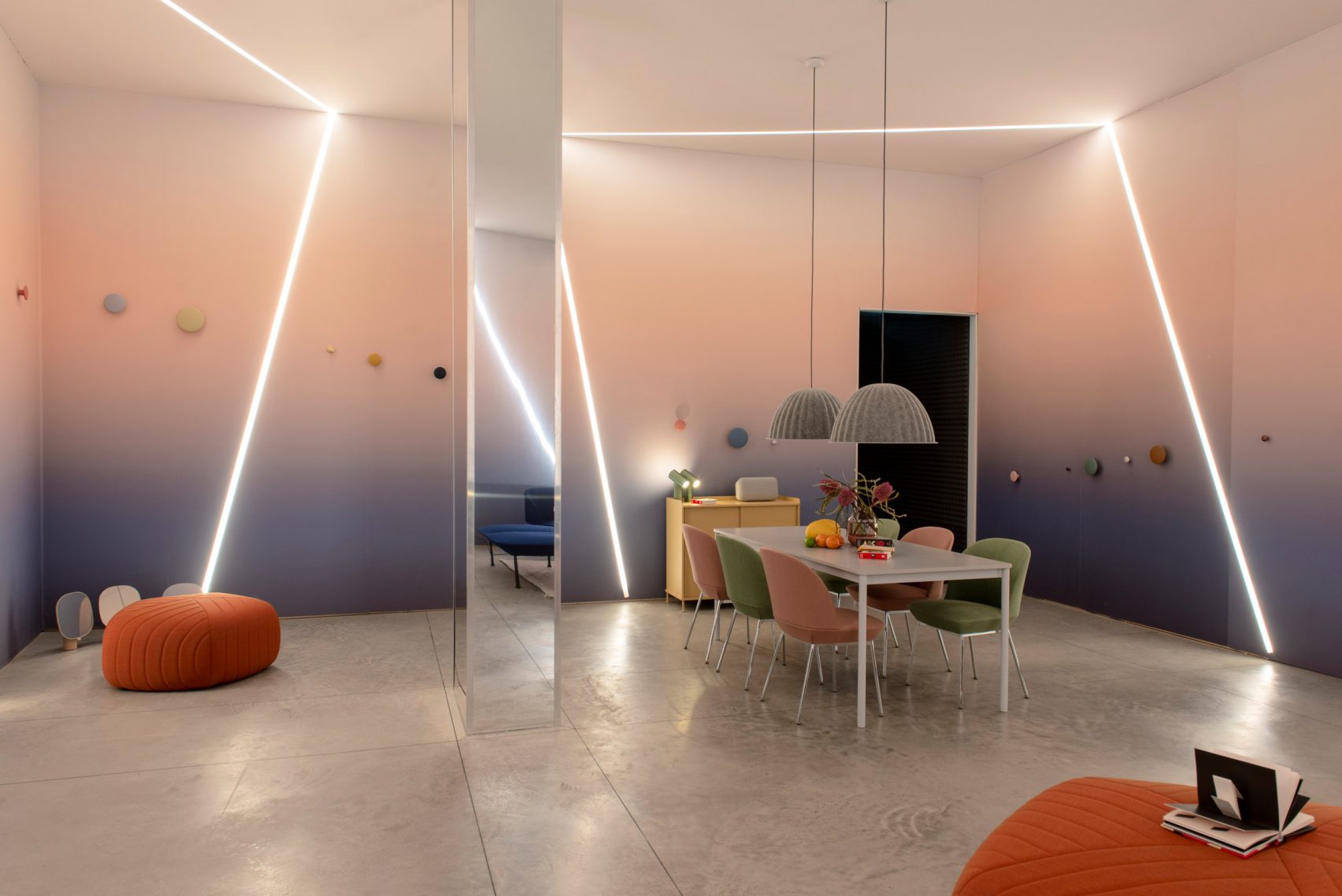Google has partnered with scientists on a Milan design week exhibition that shows how different aesthetic experiences can impact our health and wellbeing.
Developed with scientists from John Hopkins University in the USA, A Space for Being features three rooms with subtly contrasting interiors.
Each one has been designed using the principles of neuroaesthetics – a branch of science the explores how visual aesthetics can impact our brains and physiology.
With varying lighting, sounds, scents and textures, the rooms are intended to stimulate visitors' senses in different ways. The aim is to show how good design can have a positive or negative impact of mental wellbeing.
"Design affects everything," explained Ivy Ross, Google's vice president for hardware design.
"What you choose to surround yourself with affects your wellbeing and your body, and the fact that neuroscience is now proving that is thrilling to us," she told Dezeen.
"Being in Milan, there are a lot of designers here," she continued. "The installation is a nod saying 'what we do matters', showing to those who aren't designers that what designers do and the choices you make in your environments do affect you."
"It's scientific proof that design is important."
Before entering the interactive rooms, visitors are equipped with a specially made wristband, developed by Google in partnership with the International Arts + Mind Labat Johns Hopkins University, led by Susan Magsamen.
This uses four sensors to measure specific physical and physiological responses, such as heart rate and skin conductivity.
After experiencing each of the three spaces, visitors are given a customised report informing them which space they felt "most comfortable" or "at ease" in, based on their real-time physiological responses.






